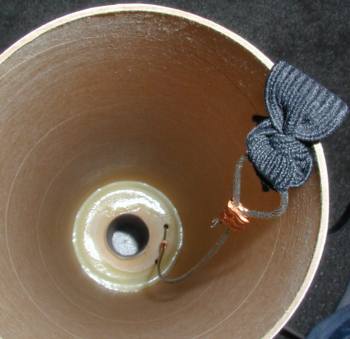The thing that works best for me [though is certainly not fool-proof] is the plastic tubing that Raven mentioned. My set-up isn't as sophisticated as his [I haven't tried a syringe]. Basically, I use either plastic or brass tubing 1/4 to 1/2 inch in diameter, get as much 15 minute epoxy in there as I can, and put it in the rocket down to the upper centering ring.
Before I've even gotten to this stage, when I insert the motor mount into the airframe, I use a profuse amount of epoxy, and twist the motor mount as I push it up into the airframe. With narrower centering rings [like, say, 3.00-2.14], the epoxy will cover the whole ring, making the task of pouring more epoxy on top of that unnecessary. With a wider ring [which, theoretically, would be found in a wider tube], you would need to get in there with some additional epoxy.
I like the brush method someone else suggested; I may have to try that next time. It'll more effectively spread it around that a just dumping it out of a tube. Although, in typing this, I just got an idea for a way to do a makeshift syringe with the brass tubing and a wood dowel that fits snugly inside the brass tubing [use the wood dowel as a 'plunger' to push the epoxy out of the tube. Anyone want to try this and let me know how it works?

